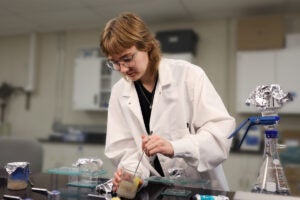AUSTIN, Texas—A University of Texas at Austin nursing researcher has received $1.2 million to continue her study into the sexual health practices of homeless adolescents, a group which already is at significantly higher risk than other youth of contracting and transmitting sexually transmitted diseases.
The research will involve more than 400 homeless adolescents in the Austin area who will be asked to log into a computer once a week at Project Phase, a community street outreach center funded by LifeWorks and located on Lavaca Street.
“We want to end up providing an effective community-based intervention for promoting sexual health to homeless adolescents,” said Dr. Lynn Rew, the Denton and Louise Cooley and Family Centennial professor in the School of Nursing. “Our goal is to curb the rising number of sexually transmitted diseases among this vulnerable population.”
The recent grant from the National Institute of Nursing Research of the National Institutes of Health brings the total amount of funding for the seven- year project to nearly $2 million. This second phase, which will include the intervention, will last three years.
Homeless adolescents are at higher risk than other adolescents for contracting and transmitting sexually transmitted diseases because they engage in risky sexual behavior at earlier ages than household youth and they lack routine immunizations (hepatitis B) and health care services, Rew said.
Homeless youth also engage in alcohol and other drug use, have sex while under the influence of drugs and engage in survival sex — exchanging sex for food, shelter, money and clothing.
“In addition, many have dropped out of school, they lack social connectedness with trusted adults and family members and are likely to have left home because of sexual abuse or conflict with parents about social orientation,” Rew said.
A large percentage of the youth in her study have said they left home because of issues related to sexual orientation (18.6 percent) and sexual abuse (12 percent). Surprisingly, scores on the AIDS knowledge scale were relatively high for homeless youth.
“Yet, despite this knowledge, their sexual health remains at risk,” Rew said.
Estimates are that two million American youth are homeless — 500,000 have been abandoned by their families, another 500,000 are homeless with their families and the remainder have run away from home.
Sexually transmitted diseases are five of the top 10 most frequently reported diseases in the United States, Rew said.
“And the health and economic burdens they pose are not only of epidemic proportions, but are virtually hidden from public view,” she said.
Past research has confirmed the effectiveness of brief interventions to enhance safer sex behaviors and reduce the prevalence of sexually transmitted diseases in various groups of high-risk adolescents, according to Rew.
“Yet, little is known about the multiple dimensions of sexual health promotion in homeless youth,” she said.
Past studies, which have tested interventions, have been limited by the transient nature of the homeless population, and the majority have been conducted with sheltered youth rather than with those living on the streets.
“Our intervention will be one that promotes comprehensive sexual health rather than focusing exclusively on reducing the risk of a single threat to sexual health,” Rew said. She added that the intervention will reflect the perspective and culture of the youth who are targeted to benefit from it, and will be available to the homeless youth at a street outreach drop-in center instead of a shelter.
“Project Phase is key in recruiting participants,” she said. “Ronnie Mendoza, the project director, and his staff are very enthusiastic about testing of the intervention at this site.”
Findings from the first part of the study were presented last summer at the International Nursing Research Congress of Sigma Theta Tau International in Copenhagen, Denmark.
For further information contact: Nancy Neff, Office of Public Affairs 471-6504.



